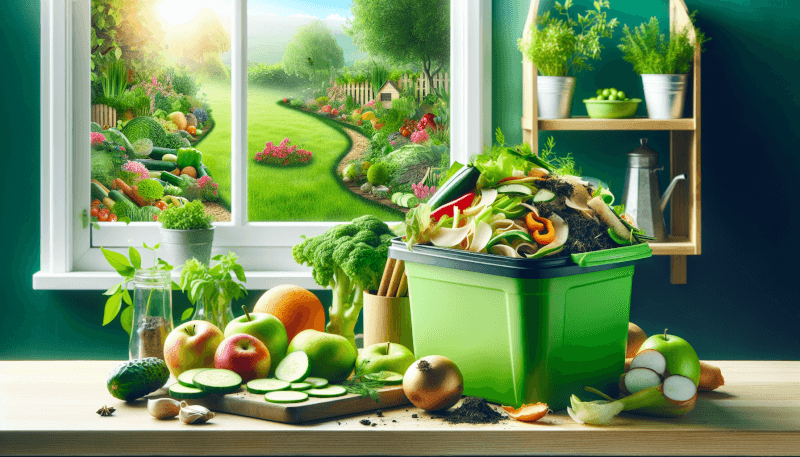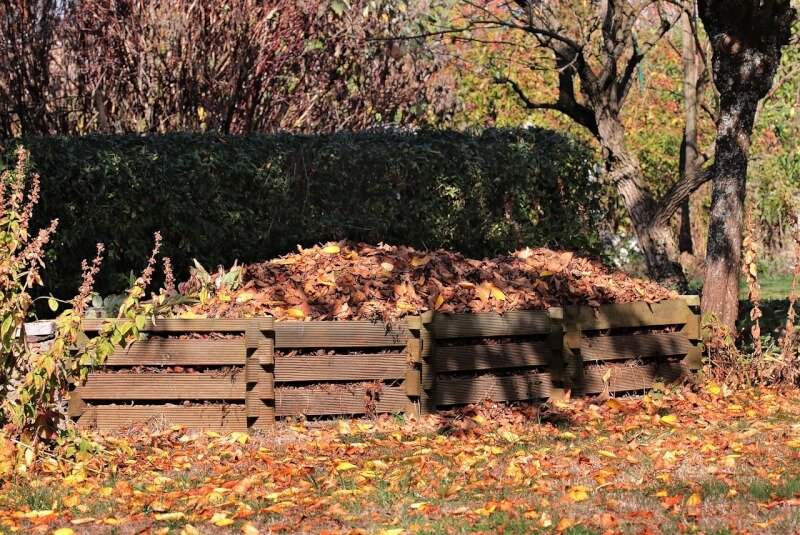Are you looking to make your garden greener and healthier? Well, look no further! In this article, we will guide you on how to compost kitchen waste effectively. By composting your kitchen waste, you not only reduce the amount of waste that goes into landfills but also create nutrient-rich compost that can significantly improve the overall health of your garden. Get ready to transform your kitchen scraps into a sustainable and eco-friendly solution for a vibrant garden! So, grab your gardening gloves, and let’s get started!

Benefits of Composting Kitchen Waste
Composting kitchen waste is not only great for the environment but also for your garden. By diverting food scraps and other organic materials from the landfill, you are reducing the amount of waste that ends up producing harmful greenhouse gases. Instead, these materials can be transformed into nutrient-rich compost that improves soil quality, saves you money on fertilizers, and enhances plant growth and health.
Reduces waste sent to landfill
One of the main benefits of composting kitchen waste is that it reduces the amount of waste that is sent to the landfill. Food scraps make up a significant portion of household waste, and when they decompose in landfills, they release methane, a potent greenhouse gas that contributes to climate change. By composting these materials instead, you are diverting them from the landfill and preventing the release of these harmful gases.
Improves soil quality
Composting kitchen waste is an excellent way to improve the quality of your soil. The compost that is produced is rich in organic matter, which helps to improve soil structure and texture. It also enhances the soil’s ability to retain moisture, which can be especially beneficial in dry or sandy soils. Additionally, compost provides essential nutrients, such as nitrogen, phosphorus, and potassium, that are necessary for healthy plant growth. By adding compost to your soil, you can create a nutrient-rich environment that supports the growth of vibrant and productive plants.
Saves money on fertilizers
Another significant benefit of composting kitchen waste is that it can save you money on fertilizers. Commercial fertilizers can be expensive, and their production often has negative environmental impacts. However, by composting your kitchen waste and using the resulting compost as a natural fertilizer, you can provide your plants with the nutrients they need without having to purchase expensive synthetic fertilizers. This not only saves you money but also reduces your reliance on chemical-based products.
Reduces greenhouse gas emissions
Composting kitchen waste is a simple yet effective way to reduce greenhouse gas emissions. As mentioned earlier, when organic materials decompose in landfills, they release methane, a potent greenhouse gas that is significantly more harmful to the environment than carbon dioxide. By composting your kitchen waste, you are diverting these materials from the landfill and allowing them to break down in a controlled environment, where methane emissions can be minimized. This means that by composting, you are not only providing valuable nutrients for your garden but also contributing to the fight against climate change.
Enhances plant growth and health
Lastly, composting kitchen waste can have a direct impact on the growth and health of your plants. Compost is often referred to as “black gold” for a reason – it is teeming with beneficial microorganisms and nutrients that promote vigorous plant growth and improve overall plant health. The organic matter in compost improves soil structure, allowing for better root development and water penetration. This results in stronger and more resilient plants that are better able to withstand environmental stresses, such as drought or disease. So, by composting your kitchen waste, you are providing your plants with the essential ingredients they need to thrive.
Choosing the Right Composting Method
When it comes to composting kitchen waste, there are several different methods you can choose from. Each method has its advantages and considerations, so it’s important to choose the one that best suits your needs and resources.
Traditional composting
Traditional composting is the most common method of composting and involves creating a compost pile or bin in your backyard. This method relies on microorganisms naturally present in the environment to break down the organic materials. Traditional composting is a great option if you have a large amount of kitchen waste and yard trimmings to compost, as it can handle substantial volumes. It does, however, require regular turning of the compost pile to ensure proper aeration and decomposition.
Vermicomposting (worm composting)
Vermicomposting, also known as worm composting, is a method that uses red worms to break down organic materials. The worms consume the kitchen waste and produce nutrient-rich worm castings, or vermicompost, as a byproduct. Vermicomposting is an excellent option for those with limited space or who live in an apartment or urban setting. It can be done indoors or outdoors, and the worms are highly efficient at breaking down organic matter. However, it is important to note that vermicomposting requires specific conditions and care for the worms to thrive.
Bokashi composting
Bokashi composting is a unique method that uses a combination of beneficial microorganisms to ferment kitchen waste. The process is anaerobic, meaning it takes place without the presence of oxygen. Bokashi composting is an ideal option for those who want to compost all types of kitchen waste, including meat, dairy, oils, and cooked foods, which are typically not suitable for traditional composting. The fermented waste can then be buried in the soil or added to a traditional compost pile to complete the decomposition process.
Trench composting
Trench composting involves digging a trench in your garden and burying the kitchen waste directly in the soil. This method is simple and requires minimal effort, making it an excellent option for those who want to compost but don’t have the time or resources to maintain a compost pile or bin. The buried waste decomposes over time, enriching the soil and providing nutrients for nearby plants. Trench composting is especially useful for gardeners who want to target specific areas or plants.
Green cone digesters
Green cone digesters are a type of composting system that uses the heat of the sun to break down kitchen waste. The system consists of a perforated underground cone that is placed in the ground, with a visible top above the surface. Kitchen waste is deposited into the top of the cone, which is then broken down by the action of bacteria and heat. Green cone digesters are a great option for those who want a low-maintenance composting method and have limited space. However, it’s important to note that they are not suitable for all types of kitchen waste and may not produce compost that can be readily used in the garden.
Preparing Your Kitchen Waste for Composting
Before you start composting your kitchen waste, it’s essential to prepare it properly to ensure successful decomposition and minimize any potential problems. Here are a few steps you can follow to prepare your kitchen waste for composting:
Collecting and storing kitchen waste
The first step in preparing your kitchen waste for composting is to collect and store it properly. You can use a dedicated kitchen compost bin or use a simple container with a lid to collect your food scraps. It’s important to empty the container regularly to prevent odors and pests. If you don’t have an outdoor compost bin or pile, you can also store your kitchen waste in the freezer to delay decomposition until you’re ready to compost.
Chopping or shredding larger scraps
To speed up the decomposition process, it’s advisable to chop or shred larger kitchen waste items into smaller pieces. This helps to increase the surface area of the waste, allowing the microorganisms to break it down more easily. You can use a knife or a food processor to chop the waste into smaller, manageable pieces before adding it to the compost pile or bin.
Maintaining the right balance of browns and greens
Composting relies on a proper balance of “browns” and “greens.” Browns refer to carbon-rich materials such as dry leaves, newspaper, or cardboard, while greens are nitrogen-rich materials like fresh grass clippings, fruit and vegetable scraps, or coffee grounds. To achieve optimal decomposition, it’s important to maintain a balance of roughly 2 parts browns to 1 part greens. This balance provides the necessary carbon and nitrogen for the microorganisms to break down the waste efficiently.
Avoiding composting certain items (meat, dairy, oils)
While many kitchen waste items can be composted, there are a few things to avoid adding to your compost pile. Items such as meat, dairy products, oils, and fats can attract pests and cause odors in the compost. They also take longer to break down and may not reach a high enough temperature to kill any potential pathogens. It’s best to leave these items out of your compost and dispose of them in other ways, such as through a municipal composting program or by using a bokashi composting method.
Setting Up a Compost Bin or Pile
Once you have prepared your kitchen waste for composting, it’s time to set up a compost bin or pile. Here are a few steps you can follow to ensure success:
Choosing an appropriate location
The first step in setting up a compost bin or pile is to choose an appropriate location. Ideally, you want to place your bin or pile in a well-drained area that receives partial sun. This will help to maintain the right moisture levels and create an environment that is conducive to decomposition. Additionally, consider placing the compost bin or pile in a convenient location, such as near your kitchen door or garden.
Building or purchasing a compost bin
Next, you will need to build or purchase a compost bin. There are many options available, ranging from homemade bins made from wooden pallets or wire mesh to commercially available bins made from recycled plastic. Choose a size and design that suits your needs and available space. If you have limited space, consider using a compost tumbler or a worm composting system.
Determining the right size
When determining the size of your compost bin or pile, consider the amount of kitchen waste you generate and the space available. A larger bin or pile will be able to accommodate more waste and produce more compost, but it may require more effort to turn and maintain. As a general rule, a compost bin or pile should be at least 3 feet by 3 feet to ensure proper decomposition.
Ensuring proper drainage and aeration
Proper drainage and aeration are essential for successful composting. Ensure that your compost bin or pile has adequate drainage to prevent waterlogging, which can lead to unpleasant odors and slow decomposition. If necessary, elevate the bin or pile on a base or create drainage holes at the bottom. Additionally, ensure that there is enough airflow in the compost to promote aerobic decomposition. Turning the compost regularly and layering it properly can help to achieve proper aeration.
Layering the compost materials
To maximize the composting process, it’s important to layer the compost materials properly. Start with a layer of browns at the bottom, followed by a layer of greens. Continue alternating layers of browns and greens until you have added all the kitchen waste. Aim to have more brown layers than green layers to maintain a good carbon-to-nitrogen ratio. Finish with a layer of browns on top to help retain moisture and prevent odors.
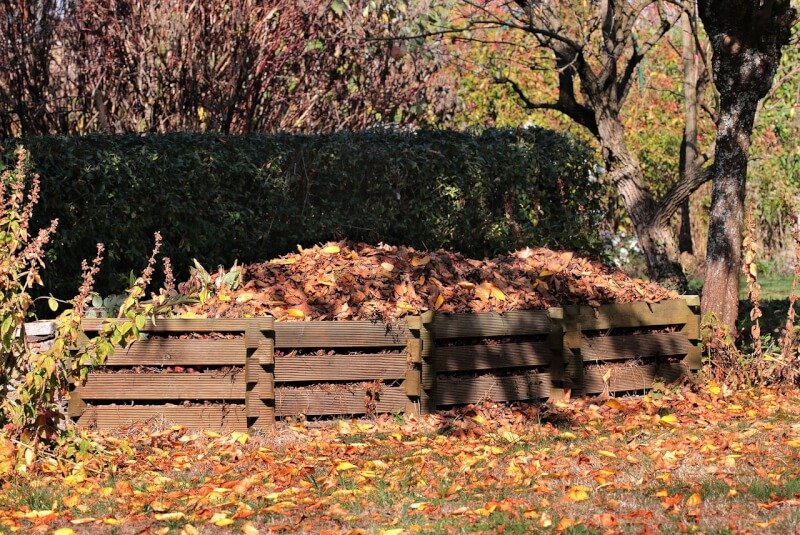
Managing and Maintaining the Compost
Once you have set up your compost bin or pile, it’s important to manage and maintain it to ensure successful decomposition. Here are some tips to help you along the way:
Monitoring temperature and moisture levels
Regularly monitoring the temperature and moisture levels in your compost is essential for successful decomposition. The compost pile should ideally maintain a temperature between 120 and 160 degrees Fahrenheit, as this helps to kill any potential pathogens or weed seeds. Use a compost thermometer to check the temperature regularly. Additionally, ensure that the compost remains moist, but not waterlogged. If it becomes too dry, add water; if it becomes too wet, add more browns to absorb excess moisture.
Turning the compost regularly
Turning the compost regularly is crucial to ensure proper aeration and decomposition. Use a pitchfork or a compost turning tool to carefully mix the compost materials, bringing the outer edges to the center and vice versa. Turning the compost every 1 to 2 weeks helps to distribute heat and oxygen throughout the pile and encourages even decomposition. However, be mindful not to turn the compost too frequently, as it can disrupt the decomposition process.
Addition of composting accelerators or activators
If you want to speed up the composting process, you can consider adding composting accelerators or activators. These are products that contain beneficial microorganisms or enzymes that help to break down the organic materials more quickly. Activators can be added when initially setting up the compost, or they can be sprinkled on the pile during regular turning. While composting accelerators are not necessary for successful composting, they can be beneficial if you want faster results.
Avoiding common composting problems
Composting is a natural process, but it can sometimes run into problems. One common issue is an overly wet or dry compost pile. To remedy this, adjust the moisture content by adding water or additional browns, depending on the situation. Another common problem is a compost pile that smells unpleasant. This can be caused by improper balance, insufficient aeration, or the addition of inappropriate materials. To combat odors, ensure proper layering of materials, turn the compost regularly, and avoid adding items such as meat, dairy, or oily foods.
Managing pests and odors
Compost piles can attract pests such as rodents, flies, or ants. To minimize pest problems, avoid adding attractants such as meat, dairy, and oily foods. Additionally, make sure that your compost bin or pile is secure and has a lid to prevent access. If you do encounter pests, you can try covering the pile with a layer of straw or cardboard to deter them. Odors can also be an issue, especially if the compost pile is too wet or contains inappropriate items. To combat odors, turn the compost regularly, add more browns to absorb moisture, and avoid adding items that are prone to causing odors.
Using Compost in Your Garden
Once your compost is fully decomposed and resembles dark, crumbly soil, it is ready to be used in your garden. Compost can be used in various ways to improve soil fertility and enhance plant growth. Here are some ways you can utilize your compost:
Determining when the compost is ready
Determining when the compost is fully decomposed and ready to use can be challenging. However, there are a few signs to look for. Fully decomposed compost is dark brown or black, has a pleasant earthy smell, and crumbles easily. It should be free of recognizable food scraps or other organic materials. If in doubt, you can sift the compost through a mesh screen to remove any larger pieces or unfinished material.
Applying compost as a soil amendment
One of the primary uses of compost is as a soil amendment. Before planting, incorporate compost into your garden beds or vegetable patches by spreading a layer of compost and mixing it into the existing soil. The compost helps to improve soil structure, increase nutrient availability, and enhance water retention. It also introduces beneficial microorganisms to the soil, which promote healthy root development and overall plant growth.
Mulching with compost
Compost can also be used as a mulch, which helps to conserve moisture, suppress weeds, and regulate soil temperature. Apply a layer of compost around the base of your plants, leaving a few inches of space around the stem or trunk. This will help to retain moisture in the soil, reduce weed growth, and provide a slow-release source of nutrients as the compost breaks down. Make sure to keep the compost layer relatively thin, around one to two inches, to prevent excessive moisture retention or suffocation of the plants.
Creating compost tea
Compost tea is a liquid fertilizer that is made by steeping compost in water. To make compost tea, fill a container with water and add a generous amount of finished compost. Let the compost steep for a few days, stirring occasionally, and then strain the liquid to remove any solids. Compost tea can be applied directly to plants as a foliar spray or as a soil drench. It provides an instant boost of nutrients and beneficial microorganisms, promoting healthy plant growth and disease resistance.
Using compost for seed starting
Compost can also be used as a growing medium for starting seeds indoors. Mix compost with vermiculite or perlite to improve drainage and aeration, and use the mixture to fill seedling trays or pots. Sow your seeds as directed, and water gently. The compost will provide a rich source of nutrients and the ideal environment for seedling development. As the seedlings grow, transplant them into larger containers or directly into your garden beds.
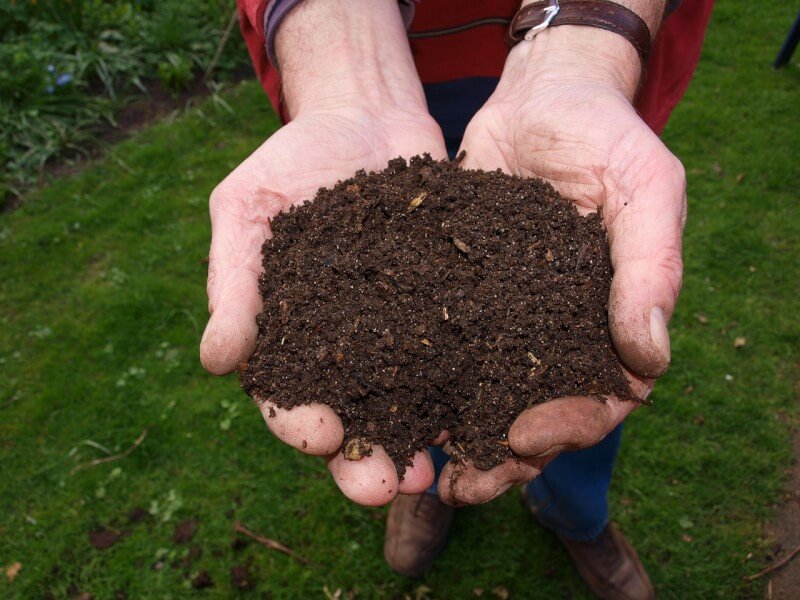
Common Mistakes to Avoid
While composting kitchen waste is a relatively straightforward process, there are a few common mistakes to avoid. By being aware of these pitfalls, you can ensure that your composting efforts are successful and productive:
Adding inorganic materials
It’s essential to only add organic materials to your compost bin or pile. Inorganic materials such as plastics, glass, or metal can take a long time to decompose, if at all. These materials can also introduce chemicals or toxins into the compost, which may be harmful to plants or the environment. Stick to using kitchen waste, yard trimmings, and other organic materials in your compost.
Composting weeds and invasive plants
While it may be tempting to add weeds or invasive plants to your compost, it’s generally best to avoid doing so. Weed seeds can survive the composting process and may sprout in your garden when you apply the compost. Similarly, invasive plants can continue to grow and spread, even in the compost. To prevent these issues, it’s best to dispose of weeds and invasive plants separately or in a dedicated composting system that can reach higher temperatures to kill weed seeds.
Using treated wood or toxic materials
Avoid using treated wood or materials that could potentially leach harmful chemicals into your compost. Treated wood, in particular, may contain chemicals such as arsenic or copper, which can be detrimental to plants or toxic to humans when exposed to high levels. Stick to using untreated wood or recycled materials in your compost bin or pile to ensure that your compost remains free of toxins.
Ignoring the carbon-to-nitrogen ratio
Maintaining the right carbon-to-nitrogen ratio, also known as the browns and greens balance, is crucial for successful composting. Ignoring this ratio can lead to slow decomposition or unpleasant odors. Aim for roughly two parts browns to one part greens in your compost. You can adjust this ratio as needed by adding more browns or greens to achieve optimal conditions for decomposition.
Overloading the compost with one type of waste
Adding too much of one type of waste to your compost can disrupt the decomposition process and lead to imbalances. For example, adding an excessive amount of fruit and vegetable scraps (greens) without enough dry leaves or newspaper (browns) can result in a slimy, smelly compost pile. To avoid this, make sure to add kitchen waste and other materials in thin, alternating layers, ensuring a good mix of browns and greens.
Troubleshooting Common Composting Issues
Composting can sometimes encounter problems or challenges along the way. Here are some common issues that you may encounter and how to troubleshoot them:
Compost not decomposing
If your compost is not decomposing as expected, it may be due to a few factors. One possibility is that the pile is too dry. To remedy this, add water to the compost to rehydrate it and encourage microbial activity. Another potential issue is insufficient aeration. Make sure to turn the compost regularly to provide oxygen to the microorganisms. Lastly, check the carbon-to-nitrogen ratio. If there are too many browns and not enough greens, the decomposition process may be slow. Add more greens to provide the necessary nitrogen for decomposition.
Foul odors from the compost
Foul odors from the compost can be a sign of poor decomposition or improper balance of materials. Odors are typically caused by too much moisture or the presence of inappropriate items, such as meat or dairy. To address this issue, turn the compost to increase aeration and moisture evaporation. If the compost is too wet, add more browns to absorb excess moisture. Additionally, avoid adding non-compostable items that may be prone to causing odors.
Presence of pests or insects
If you notice pests or insects in your compost pile, it may be due to improper balance or an attractant present in the compost. Avoid adding items such as meat, dairy, or oily foods, as these can attract pests. Make sure that your compost bin or pile is tightly sealed to prevent access. If you still have pest problems, try covering the pile with a layer of straw or cardboard, or consider using a row cover or screen to deter pests.
Hot and steamy compost
A hot and steamy compost pile is a good sign that the composting process is working as it should. However, if the compost becomes excessively hot, it may indicate too much nitrogen-rich material or insufficient turning. If the temperature exceeds 160 degrees Fahrenheit, it can harm beneficial microorganisms and slow down decomposition. To bring down the temperature, add more browns to balance the carbon-to-nitrogen ratio and turn the compost more frequently to distribute heat and oxygen.
Compost too wet or too dry
Achieving proper moisture levels in your compost is crucial for decomposition. If the compost is too wet, it can become waterlogged and lead to anaerobic conditions and foul odors. To address this, add more browns to absorb excess moisture and turn the compost to improve airflow. On the other hand, if the compost is too dry, it may hinder decomposition. In this case, add water to rehydrate the pile and promote microbial activity. Regularly monitor the moisture levels and adjust as necessary to maintain a moist, but not waterlogged, compost pile.
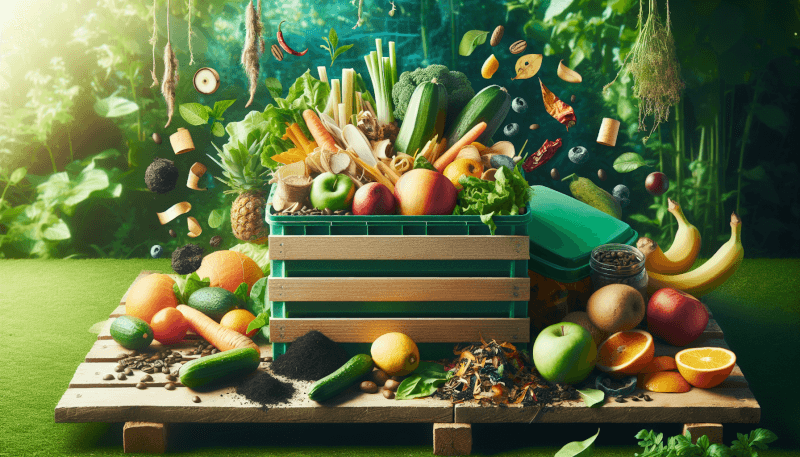
Tips for Successful Kitchen Waste Composting
To ensure successful kitchen waste composting, here are some tips to keep in mind:
Maintaining a proper balance of browns and greens
Maintaining the proper balance of browns and greens is crucial for successful composting. Aim for a ratio of roughly 2 parts browns to 1 part greens to achieve optimal decomposition. Adjust this ratio by adding more browns or greens as needed to ensure a well-balanced compost pile.
Chopping or shredding larger waste items
To speed up the composting process, chop or shred larger waste items into smaller pieces. This helps to increase the surface area of the waste, allowing for faster decomposition. Use a knife or a food processor to chop or shred kitchen waste before adding it to the compost pile or bin.
Layering green and brown materials
When adding kitchen waste to your compost, make sure to layer the materials properly. Alternate layers of green materials, such as fruit and vegetable scraps, with brown materials such as dry leaves or newspaper. Aim to have more brown layers than green layers to maintain a good carbon-to-nitrogen ratio.
Regularly turning the compost
Turning the compost regularly is essential for proper aeration and decomposition. Use a pitchfork or a compost turning tool to mix the compost materials, bringing the outer edges to the center and vice versa. Turning the compost every 1 to 2 weeks helps to distribute heat and oxygen throughout the pile and promotes even decomposition.
Covering the compost to retain moisture
To retain moisture in your compost and prevent it from drying out, consider covering the compost pile or bin with a tarp or a layer of straw. This helps to retain moisture and create a stable environment for decomposition. However, make sure to allow for proper airflow to prevent anaerobic conditions.
Conclusion
Composting kitchen waste is a simple and rewarding way to reduce waste, improve soil quality, and enhance the health of your garden plants. By diverting organic materials from the landfill and turning them into nutrient-rich compost, you not only contribute to a greener and healthier environment but also save money on fertilizers and promote sustainable gardening practices. Whether you choose traditional composting, vermicomposting, bokashi composting, trench composting, or green cone digesters, the benefits of composting kitchen waste are numerous. Just remember to follow the proper steps for preparing your waste, setting up a compost bin or pile, managing and maintaining the compost, and using the resulting compost in your garden. With a little effort and care, you can turn your kitchen waste into “black gold” and create a thriving garden that is as beautiful as it is sustainable.
